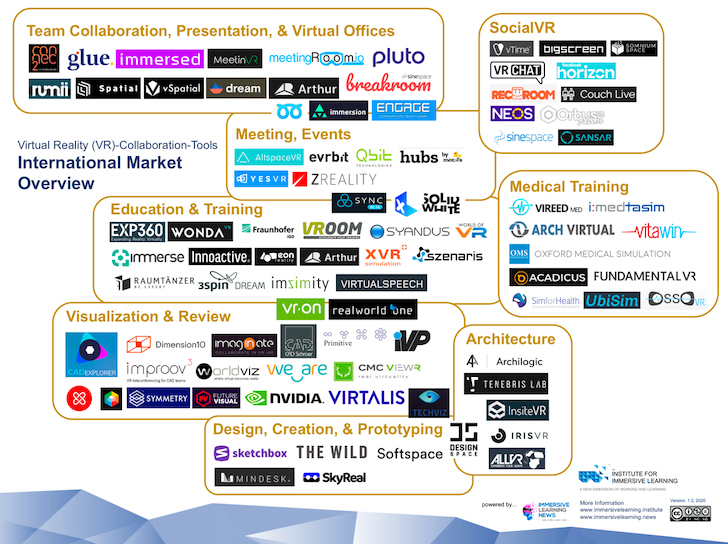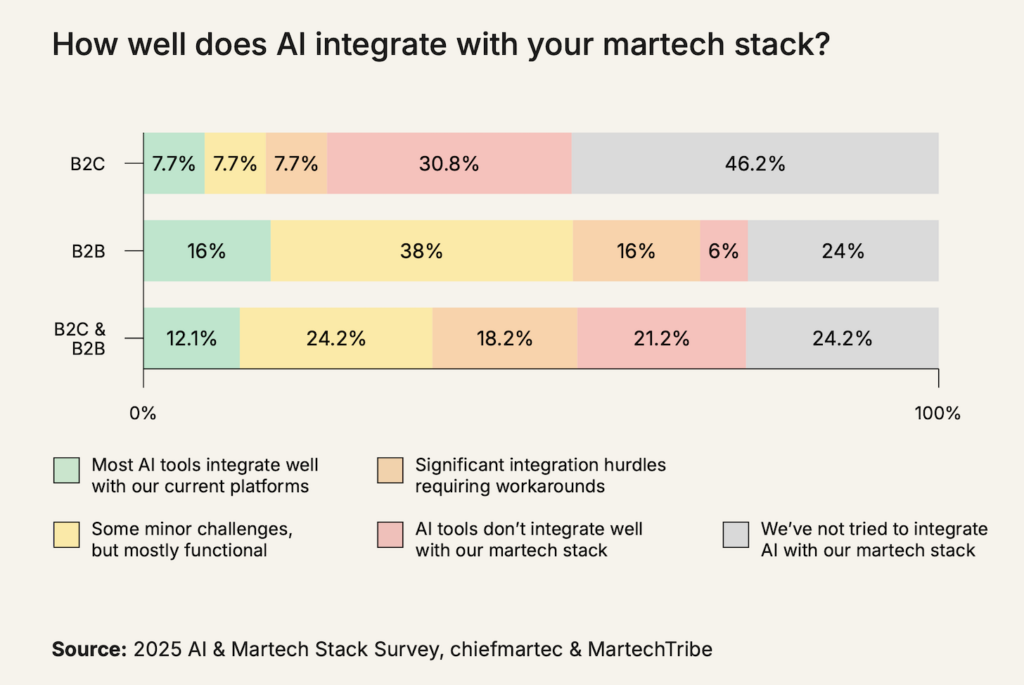
What is the metaverse? What will it mean for marketing and martech?
Last week, I led a roundtable discussion with three leaders of martech companies — Acquia CMO Lynne Capozzi, Wistia CEO Chris Savage, and Persado COO Assaf Baciu — to consider these questions from several different perspectives. (With kudos to Samantha McGarry at Inkhouse PR for arranging this session.)
The video of our discussion is included below, but here the main points I took away from our session:
Takeaway #1: The metaverse isn’t (just) hype.
The metaverse is already here. Actually, dozens of metaverses are already here today. Yes, we’re living in a multiverse, Spider-Man. They’re primarily screen-based gaming worlds such as Roblox and Fortnite. Note that gaming is currently a $180 billion global market, and in-game advertising is expected to be a $56 billion global market by 2024. I just read a stat from McKinsey that 200 million monthly users spend an average of 2.5 hours a day on Fortnite and Roblox.
This is a legit channel today. It will be a massive channel in the future.
Now, only a small percentage of games offer immersive 3D experiences through VR devices today. But the technology is advancing rapidly. Metaverses are improving iteratively around us. And while the hype should be taken lightly, there is fire here, not just smoke.
At the beginning of this year, I noted three big innovation trends in martech — commerce, Big Ops, and no-code. Not only was the metaverse not included in those top three, I cited it as “still early” in 2022 under an omissions heading. Relative to the scale of my top picks, I still believe that’s true. But martech moves fast. What’s an early adopter technology today, quickly becomes a mainstream majority technology tomorrow.
One sign of the scale of the metaverse wave underway is the proliferation of vendors in the space mapped in large and growing landscape graphics — what have I wrought? — such as one by CB Insights, another by NewZoo, and this one from Jon Radoff:

(You can argue that it’s the same phenomenon with blockchain technologies such as cryptocurrencies and NFTs. I’ll get to those in a minute.)
Takeaway #2: It’s a fragmented multiverse.
Emphasizing the point made in passing above: there will not be one metaverse. There will be dozens, hundreds, even thousands of them. For marketing and martech, this foretells a large, fragmented landscape.
Of course, martech pros know better than most that fragmentation breeds its own solutions. As with web advertising, it’s possible that a small oligopoly of “ad” networks will provide a unified interface to treating all these channels as a common pool — essentially serving as metaverse ad aggregators.
But I put “ad” in quotes here because the immersive, interactive nature of metaverse experiences lend themselves to more novel ways of engaging with an audience. For instance, a virtual pop-up stand with in-metaverse services, objects, and transactions. The functionality available is likely to vary widely from one metaverse to the next. It’s not just billboards and product placement.
I’m sure a set of standard “ad” units will emerge. But they are likely to be more varied and more complex. Think of them as packaged mini-apps more than static content assets. (Yes, apps inside apps — kinda meta.) I believe this will create a larger opportunity for martech tools that create, manage, and distribute meta marketing mods across different multiverses.
A no-code multiverse marketing platform? Maybe.
Takeaway #3: It’s not just fun and games.
While games and other kinds of entertainment — such as concerts in the metaverse — are where most of the engagement is today, we already see professional use cases emerging.
Virtual events took off during the pandemic. And while real-world events — fingers crossed — are starting to reignite, the benefits of virtual events guarantee that they will continue and multiply. They’re cheaper to produce and to attend, which democratizes who can host them and who can participate. They have a lower carbon footprint (caveat: assuming we don’t blockchain the heck out of them).
But admittedly, virtual events that are essentially just a video conference broadcast have their limit on engagement (hello, Zoom fatigue). A poll of scientists by Nature showed that 74% wanted virtual conferences to continue after the pandemic — but 69% cited “poor networking opportunities” as their biggest drawback.
More immersive and interactive conference-like experiences in the metaverse still feel a bit clunky today, but they have a lot of room for innovation. They will benefit from the rapid advancement of this technology in the gaming sphere.

Closely related are virtual training and collaboration environments. The above landscape from the Institute for Immersive Learning captures a sample of the platforms providing these capabilities today. These blend into specific professional use cases for fields such as architecture and design.
One vendor that plays a huge but underappreciated role in this today is Autodesk, which provides state-of-the-art tools for creating advanced 3D digital assets. (A grateful shout-out to them for also contributing to The Stackies last year. And a reminder that you can still enter your martech slide in the 2022 Stackies before the end of this month.)

In the world of martech, all of these solutions — events, training, collaboration, virtually conducted commerce for physical objects and assets that can be represented in a more compelling, immersive fashion — have promise. Existing platforms in your stack from DAM to DXP will need to adapt to support these capabilities. There will be new products for ever-more-advanced virtual events and learning experiences.
And if you thought attribution was a tricky challenge in today’s marketing menagerie, the martech that will emerge for attribution in the metaverse will be a whole new adventure.
Takeaway #4: Native NFTs and cryptocurrencies
In our roundtable discussion, it was interesting to have both advocates and skeptics on the current state of NFTs and cryptocurrencies. In full disclosure, I’m still on the fence. I think the blockchain paradigm has a huge future in a wide variety of applications. The current wave of cryptocurrencies and NFTs is more of a mixed bag of what’s real and what’s fad, at least in my non-ape opinion.
But a point that resonated with me in our discussion is that the rise of the metaverse is likely to provide a more native environment in which NFT-like assets have greater meaning and value. So those adventurous souls spending big on virtual goods and real estate might turn out to be geniuses.
On the other hand, this will depend heavily on what metaverse platforms themselves permit. For all the talk of decentralization, almost all of the metaverse environments today are running on centralized platforms. Those platform owners have tremendous control over what exists inside their virtual reality and the economies that develop within them.
While they’re still both in a highly fluid, early stage of development, there’s a symbiosis between these two technologies. In many ways, they reinforce each other’s progress.
Takeaway #5: The best way to learn is to experiment
Now, as a martech person, I’m sensitive to the accusation of shiny object syndrome. So I’m most certainly not suggesting that you run and reallocate a huge chunk of your time and budget into the metaverse.
However, we learn by doing. And arguably a much greater risk in one’s career is a calcification of thought and diminishing acquisition of new skills. The metaverse is going to be a big part of our future in marketing, and that object in our mirror is perhaps closer than it appears.
So I was particularly impressed by Chris Savage’s decision to give all of his employees VR headsets and start experimenting with using them. Since Wistia embraced a remote working environment, it makes a lot of sense to try new approaches to team engagement and collaboration. Partly for their direct benefit and partly because anything but Zoom can be a refreshing break.
Chris described a couple of the scenarios they played with, what worked and what didn’t. I’ll let you hear directly from him in the video below.
But at a higher level, it was a reminder that in a field like martech that is continuously changing at such a blindingly fast pace, investing at least a little bit of time — 5%? — in dabbling with emerging technology is essential to keep up with where the industry is headed. Even learning first-hand what doesn’t work, at least not yet, is helpful knowledge to guide your thinking for the road ahead.
Don’t just read about it. Try it.
Here’s the full video of our roundtable discussion (or click this link from email):


